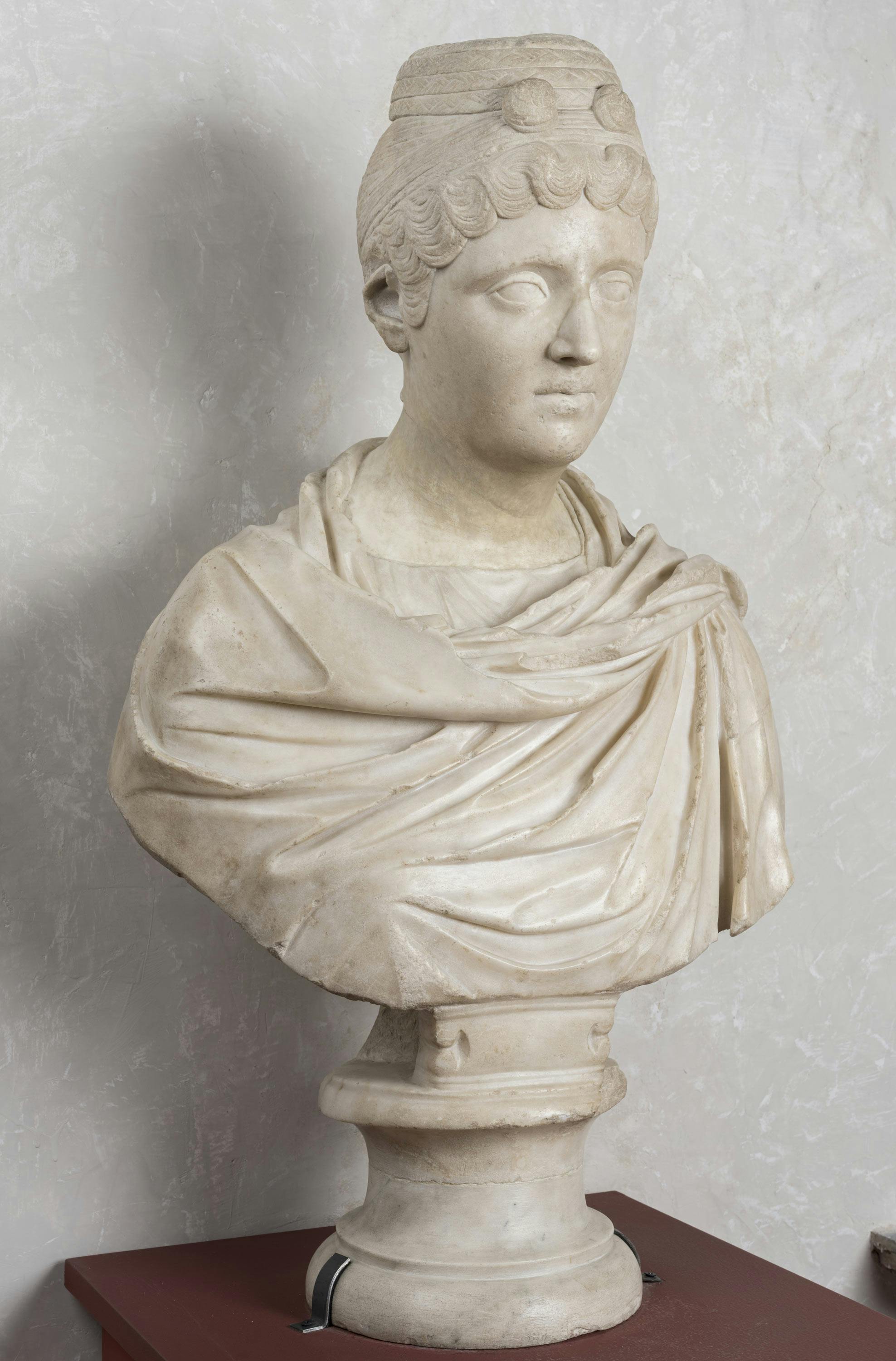Portrait of Faustina the Elder
Roman art
The sculpture portrays Anna Galeria Faustina, wife of the emperor Antoninus Pius, known as the Elder to distinguish her from her daughter of the same name, wife of her father's successor, Marcus Aurelius (161-180 AD). The portrait is of the so-called 'Dresden' type, featuring a more sophisticated 'turban' or 'tower' hairstyle, an element in any case characteristic of all three of the known portrait types used to depict this empress. Here, the face is framed by a flat fringe divided into two wavy and symmetrical sections, surmounted by two locks twisted back on themselves in the shape of a rosette; at the back the hair, divided into four coils of braids, is gathered in an elaborate spiral towards the top of the head, forming a tower. This is in fact a later version of the turban hairstyles already popular in the early period of Hadrian’s reign, but with Faustina it becomes more regular and is tapered towards the top. As far as dating the piece is concerned, despite its clear resemblance to the archetype, probably created in 138 AD, when she was proclaimed Augusta, the way the sculptor has softened the sovereign's facial features, in contrast with the precise definition and almost hardness of her features in the portraits produced during her lifetime, leads us to believe that this is a posthumous work.
The more severe and restrained forms of Faustina the Elder’s hairstyle compared to the previous canons, as well as the repetition of her husband's portrait type, are part of a precise propaganda choice. These aspects of the portrait aimed to symbolize the order and moral rigor that the new direction taken by the Principality wished to embody. Similarly, the constancy and frequency of the representation of Faustina the Elder, either alone or in connection with her husband, was clearly intended to symbolize the stability of imperial power and the continuity of the dynastic system, of which the diva Faustina would soon become the tutelary deity, given that she died and was deified shortly after her husband's rise to power in 141 AD.
The late identification, in the 1930s, of the woman portrayed with the Empress Faustina the Elder has made it difficult to trace the history of the work in collections. However, its presence in the Uffizi Gallery collections since at least 1914 is certain.
